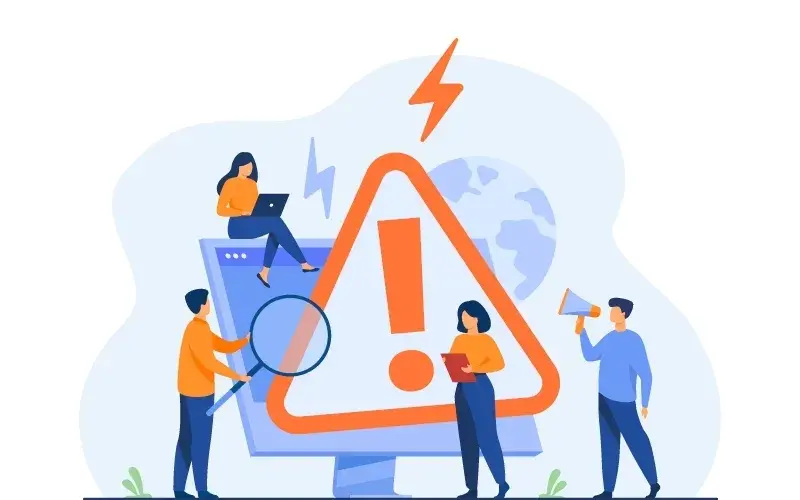In today’s market, start-up companies provide the ideal opportunity for individuals to develop original business ideas. Start-ups typically have a limited size and little economic worth. Still, they offer the perfect chance for businesses to expand and thrive in the future. Start-ups may seem like an easy way to generate quick cash. But frequent errors made by business owners can quickly result in the demise of their enterprise.
What is an SME?
Small-to-medium enterprises (SMEs) are a broad group of businesses that can be classified based on annual sales or employee count. Millions of people work for these enterprises, which comprise the bulk of Australian companies and propel the economy by contributing 55% of the country’s GDP.
The ATO (Australian Taxation Office) defines small enterprises as those with an annual turnover of $10 million or less. According to their definition, large enterprises have a yearly turnover of more than $250 million. In contrast, medium-sized businesses have an annual turnover between $10 million and that amount. These vast businesses include trusts, partnerships, and super funds owned by private, public, and foreign entities.
What are the Mistakes They Make?
 https://www.freepik.com/free-vector/_11235921.htm
https://www.freepik.com/free-vector/_11235921.htm
As a technological corporation, we look at problems from a unique angle that SMEs should discuss more. In this post, we’ll look at some of the mistakes that SMEs frequently make, the effects they can have, and what you can do to fix them.
Mistake #1: Insufficient Technical Assistance
Lack of technical help is the root of most SME IT problems. Contrary to large businesses, most SMEs rely on that one staff member who is only marginally technically inclined to resolve everyone’s IT problems. That may initially be effective, but as your company expands, you may realize that you would benefit from hiring an IT professional, but that needs more funds.
Mistake #2: Not Upgrading Technology
One of a company’s most significant mistakes could be using outdated technology (Operating systems, hardware, and application software.). Although purchasing and using outdated gear and software may appear to be the most cost-effective choice, it increases costs over time. The shorter shelf life of older technology makes it more likely to experience problems and malfunctions.
Mistake #3: Lack of Security
Small firms usually ignore or fail to take security risks seriously.
Unfortunately, corrupted systems, automated attacks, identity theft, data theft, and other crimes affect organizations everywhere. SMEs that neglect to adequately protect client and customer data frequently face security crises that harm their reputation, lead to lost sales, and erode consumer trust. Small firms should have a reliable firewall, anti-malware software, and other security measures.
Mistake #4: Poor Backup Plans
Even though there are various possibilities, strategies, and methods, many firms still need to back up their data sufficiently.
Losing IT capabilities at any time due to technical, human, or natural calamities implies downtime for your workforce, which can be disastrous for your business. You lose your most valuable business assets if you experience a data loss, including client data. Business data has a critical value that companies sometimes need to pay more attention to, and its significance is frequently only understood when it is too late.
Because data backups are so important, an outsourced IT partner can collaborate with your SME to decide which data, files, and information you should back up. The IT partner can tell you how often you should make the backup data sets, where to store the backups, and how frequently you should check the data sets’ integrity.
Mistake #5: Inadequate Business Technology Training and Support
One of the most critical factors in business technology is access to support and training when you need them.
According to estimates, office personnel use less than 20% of the features offered by the software programs they work with. That is inefficient because they use less than 80% of the features, time-saving capabilities, and cost-saving functions.
Of course, there is no assurance that staff abilities will advance even in the presence of training resources. Businesses need to prioritize computer and software training if they want it to happen.
How to Overcome These Mistakes?
Entrepreneurs sometimes make the error of believing that their solution is one-of-a-kind, has never been done before, and requires a totally original solution from the bottom up. Most of the time, it doesn’t. Utilize the strength of the platforms that are already in place and only make adjustments to what is particular to you.
Our advice will be helpful as you start your journey as a business. Since you will be working with vendors, it is crucial to pick someone you feel at ease around.
Please feel free to get in touch if you need guidance or clarification about how to proceed. Our services will assist you in outlining a course of action.
Sanmark Solutions, a custom software development company, has collaborated with many innovative firms. Get in contact with us if you would like to discuss your project with us.
Feature image source: https://www.freepik.com/free-photo/_11306683.htm
